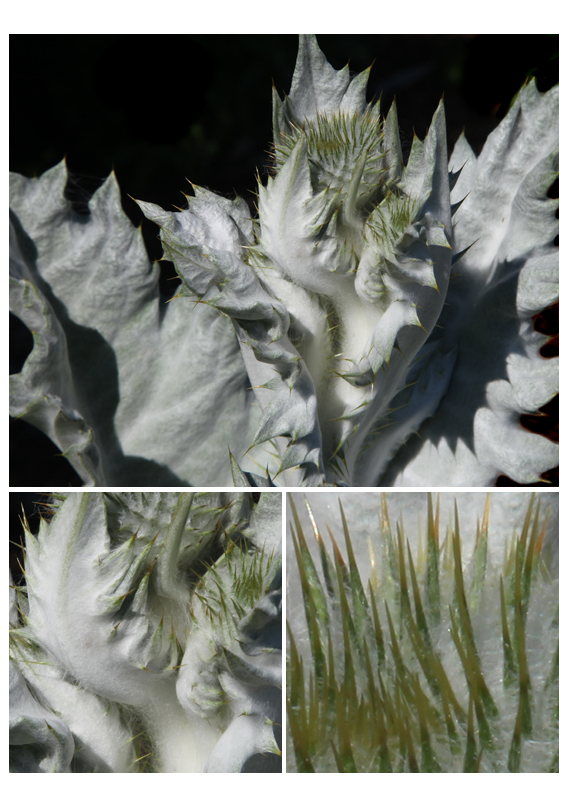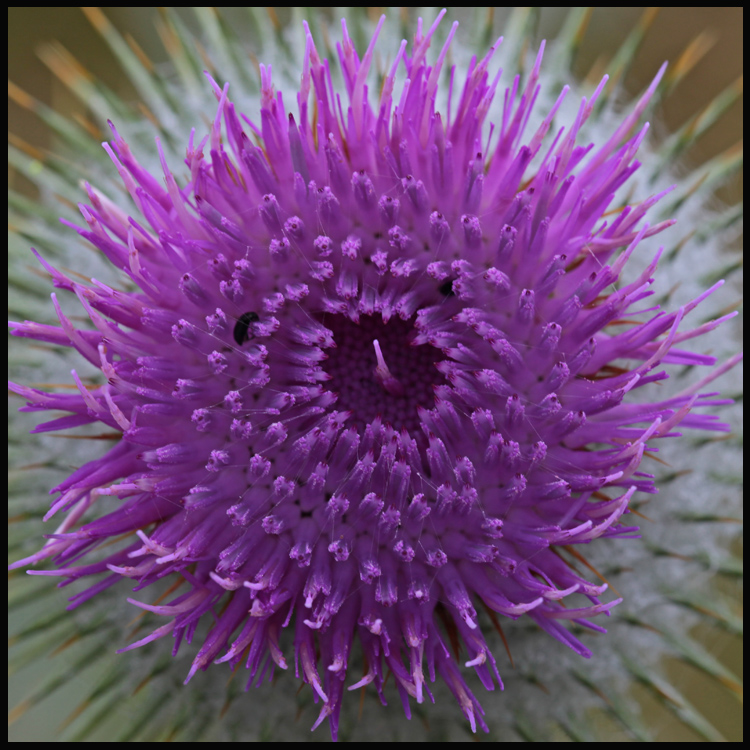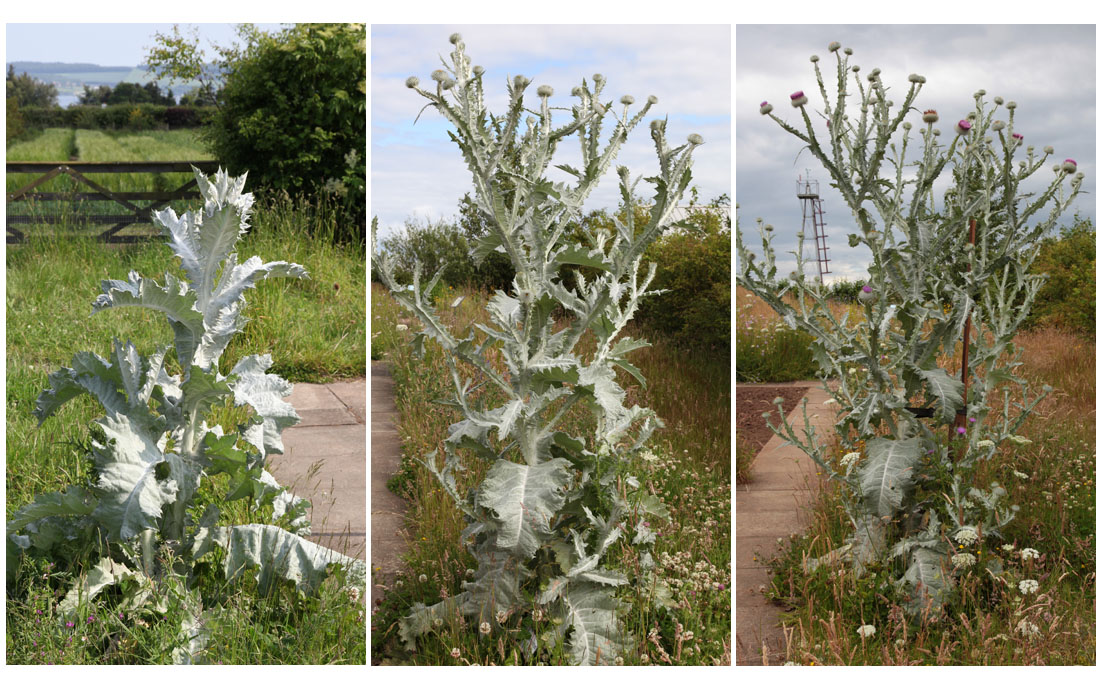The cotton thistle Onopordum acanthium is an uncommon member of the composite family that takes in the thistles, knapweeds, dandelions and daisies. It is rarely seen this far north in Britain, and is more likely in gardens than in the wild, where it appears sometimes in waste ground and uncultivated but disturbed areas.
So the arrival of one in the first year of the garden was no little surprise. It must have germinated from seed carried into the garden on the wheels of vehicles or in soil brought in when other plants were introduced. The cotton thistle is a great spiny plant covered in soft down.

The images above show a plant at the stage where it is unfolding its main flower head. The head emerges from the protection of spiny leaves with its own armoury, that only relents when it is time for the head to open, revealing the mass of soft, purple florets inside.
The flower heads once opened are immediately attractive to bees and beetles. It was rare to see a head without some black shiny forms deep between the florets; while bumble bees were sometimes two to a head.

The plant is biennial, germinating and ending the first year as a rosette close to the ground. By spring the next year it starts to expand in height, and if allowed the space and nutrients, extends to 8 to 10 feet, yet it stays strong against the winds. The plant below went from left to right in about six weeks.

